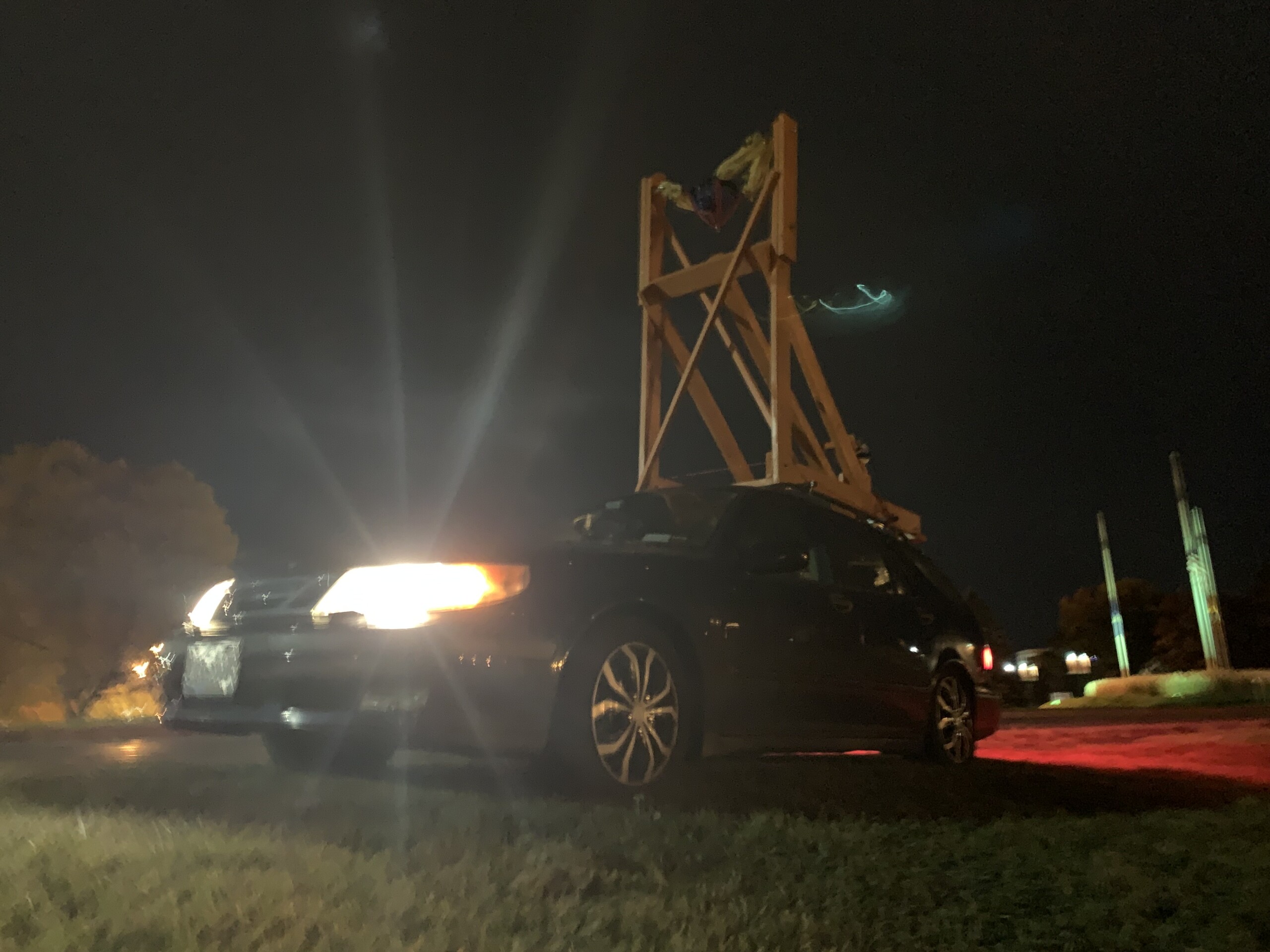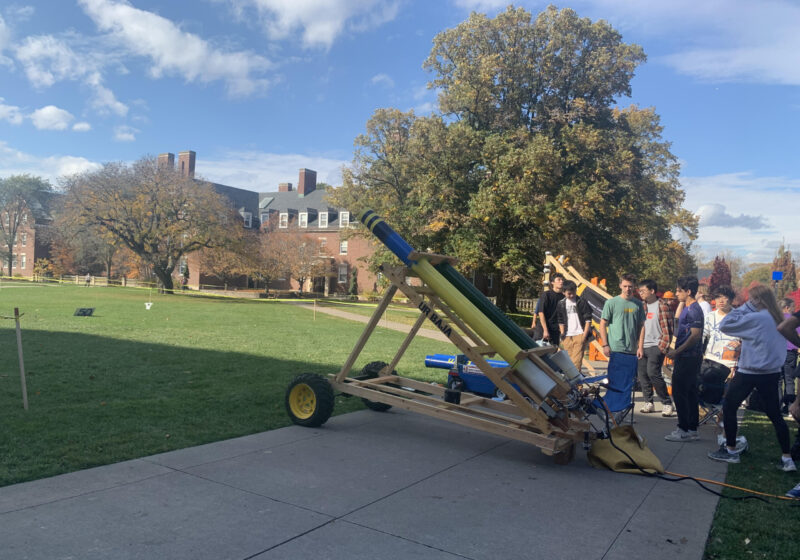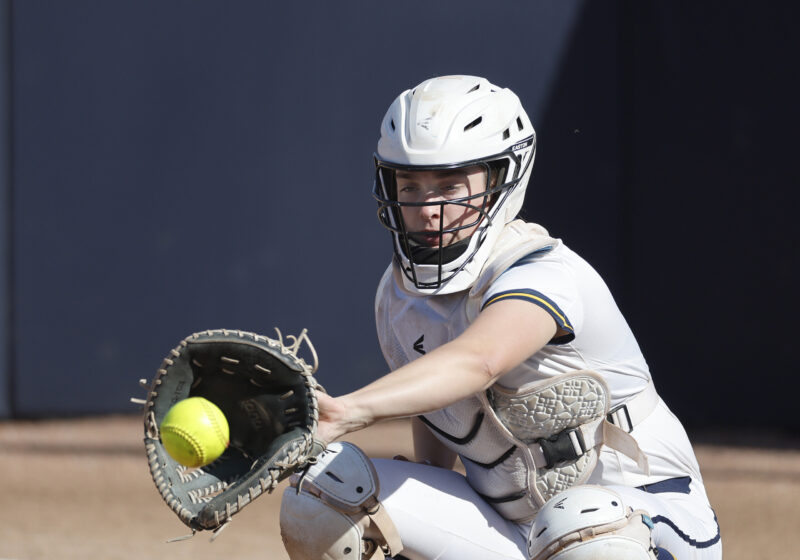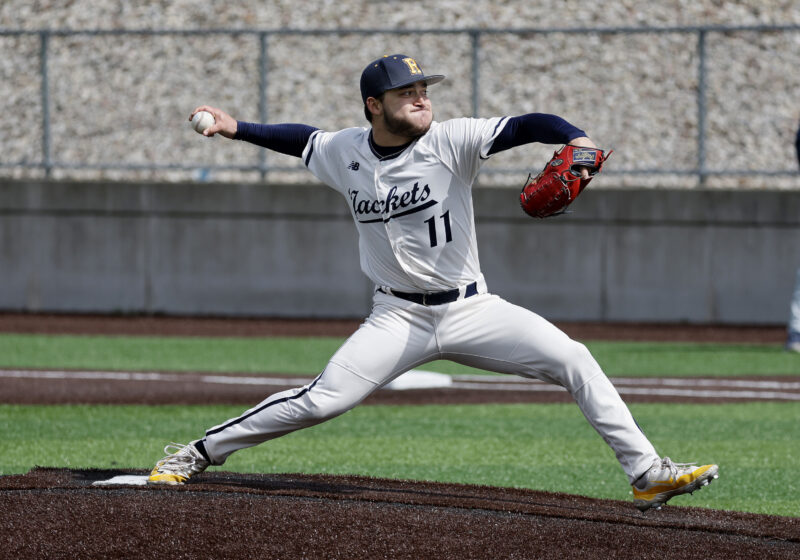“Fire in the hole!”
It’s common to keep your head down when walking around campus — but this Friday, the parade of pumpkins hurtling over Wilson Quad may have caught your eye.
The Pumpkin Launch, which is hosted annually by the University’s American Society of Mechanical Engineers (ASME) chapter, is hard to miss. Bookended by River Campus Libraries’ Scare Fair and the musical stylings of everything from Frank Sinatra to Soulja Boy on the Wilson Commons Porch speakers, the Pumpkin Launch stretches across Wilson Quad for the entire afternoon.
Teams haul their launching mechanisms there, line them up, and fire off test shots . Competitors are judged on distance in the first round and accuracy in the second. A halftime event where students are pitted against each other to throw a pumpkin as far as possible breaks up the launches and the judging.
Since its inception 21 years ago, the Pumpkin Launch has grown into its own. It’s moved locations from Wilson Quad to the baseball fields at Genesee Valley Park and back again, been sponsored by Home Depot, and has allegedly led to some broken windows on the Fraternity Quad.
“In 2002, the Jack-O-Launcher Competition, as it was first called, was started by Dan Nathan-Roberts, who at the time was a junior and social chair of ASME,” wrote Caitlin Olfano ‘12 in a Campus Times article covering the 10th anniversary of the event. “[…] While the event was shaping up to be an opportunity to flaunt UR’s engineering abilities and Halloween spirit, it developed into much more — an opportunity to get the Rochester community involved on campus.”
This year, the event featured four different groups. They ncluded UR BAJA and Solar Splash (two recurring staples), RIT’s ASME chapter (last year’s winner), and newcomers from Monroe Community College’s (MCC’s) Engineering Leadership Council and SMASH Club.
Announcing for the event was sophomore Hisashi Lonske, a Mechanical Engineering major at the University and an ASME class representative. Lonske says he was picked to host the event — coordinated by junior and ASME Programming Chair Max Colognesi — due to his loud voice. While he’s announced events in the past, Lonske made his Pumpkin Launch debut this year after attending last year as a volunteer.
The crowd of dozens was composed of diverse onlookers: Seasoned viewers, first timers, on-campus, and off-campus community members alike ogled the soaring squashes.
Simon Barnett, who takes Zimbabwean marimba lessons through ECMS, wasn’t expecting to spend his Friday afternoon on the River Campus. By chance, he was looking for his concert calendar online, hit the website’s “View All Events” tab, and stumbled upon the Pumpkin Launch on a cursory scroll.
“My sons were both in town, so we decided to take a bike ride over here and take a look,” he said.
His sons, Joel and Ian, held their bicycles right behind the caution tape, avidly commentating on each launch. Joel, a 2014 alumnus from MCC, said he had never heard of the Pumpkin Launch, but that he was “rooting for whoever [exploded] a pumpkin the best.”
“I’m disappointed in no trebuchets,” he said. “I’d love a catapult and a trebuchet.” He also suggested that his family members should create a team to compete at next year’s event.
Within the University community, students, staff, and faculty were all in attendance.
The Mechanical Engineering department’s staff and faculty served as judges and as a full-fledged cheering squad at the 200 line. Among them was Administrator Jill Morris ‘02, who whooped and hollered alongside Senior Staff Accountant Kaleb Chitaphong ‘19.
“I remember seeing [the Pumpkin Launch] as a student and taking a quick stop by passing and stuff,” said Chitaphong, who previously owned the South Plymouth Avenue bar crawl staple Tin Roof (now Turntable) prior to taking up his current position with the department. “Now that I know a lot of the students here, it’s much more fun.”
“I think it’s the highlight of the year,” said Mechanical Engineering Professor John Lambropoulos, who helped judge the event this year. The professor, who has spent over 30 years with the Mechanical Engineering department, has been present at over 10 Pumpkin Launches.
Some first-time Pumpkin Launch watchers included first-years Kareen Dineny, Khia Williams, and Annia Johnson-Pierre, who happened upon the event after a week of slogging through midterms. They proceeded to sit on the grass to watch the entire test launch procedure. “Watching them bike ride and push the pumps — the behind the scenes is so interesting,” said Dineny.
Speaking of bike riding, UR BAJA coasted through the event with their distance-focused pneumatic pumpkin launcher, which was powered by a team member furiously pedaling on a suspended bicycle. Other members were tasked with lubricating the cannon with WD-40 prior to loading the pumpkins for launch.
Solar Splash, whose air cannon utilized a foot pump for pneumatic pressure and boasted a fire extinguisher sign as a racing stripe proxy, have been trundling the same pumpkin-launching pelter from Hopeman since at least 2019, according to senior Calista Courtney.
“We can do the 100, but not beyond that,” said Courtney. “Maybe next time we’ll actually try to invest the time, but for now it’s fun to just see everyone.”
The RIT team’s slingshot secured the team their victory last year, but they’ve iterated upon it by reinforcing the sides for aided flex and adding some elastic yellow tubing for better shot-putting.

RIT’s team loaded their slingshot onto a team member’s car in order to take it out for field testing.
According to Mechanical Engineering second-year Nick Major, the team weighed some pumpkins and strapped the contraption to ASME President and Mechanical Engineering senior Jan Trunecek’s 2001 SAAB 9-5 wagon to take it for literal field testing on RIT’s campus.
After collecting their data, the team created a MATLAB script that takes in the weight of a pumpkin and outputs how far the slingshot needs to be pulled back in order to achieve a given landing distance.
For style points, the team attached a hockey stick and a Bills flag to the top of the apparatus, the latter of which had to be manually held back on launch in order to not interfere with the trajectory of each pumpkin. When asked what the impetus was for the decor, Trunecek said it was a “community idea.”
MCC’s entry into the Pumpkin Launch was, according to senior Ethan Dennis, akin to a Roman ballista. Dennis, who studies manufacturing, described it as a tried and true design, dating back “two to three thousand years.” Constructed from unpainted 2x4s, the team toted the slingshot to Wilson Quad in the bed of a rented U-Haul pickup.
The initial basket for the pumpkin was denim-derived, sourced from the seat of Dennis’ old farm jeans. The fabric worked well for initial tests, but rapidly fell apart when ranged past 200 feet. The jeans were found to consistently tear at a drawing force of 900 pounds. The jeans were replaced with a woven basket of hardware store paracord.
The slingshot was drawn with the use of a winch. When the first winch failed due to the extreme force, they used a second that had a dramatic gear reduction alongside a drill to unspool the cable. Since the crank and drill occupied the same shaft space, the drill caused the crank to spin around at a very high speed. The team declined to comment on the safety of this procedure.
Despite their jean-less approach on the field, MCC drove off in their soon-to-be returned U-Haul with the silver pumpkin trophy, representing their victory in both range and accuracy.
News Editor Rachel Caren contributed reporting for this article.





